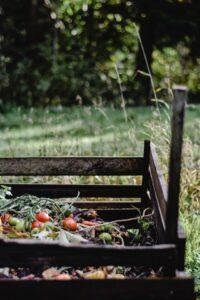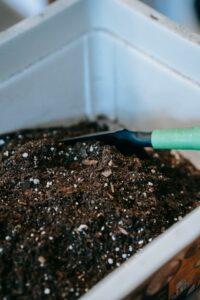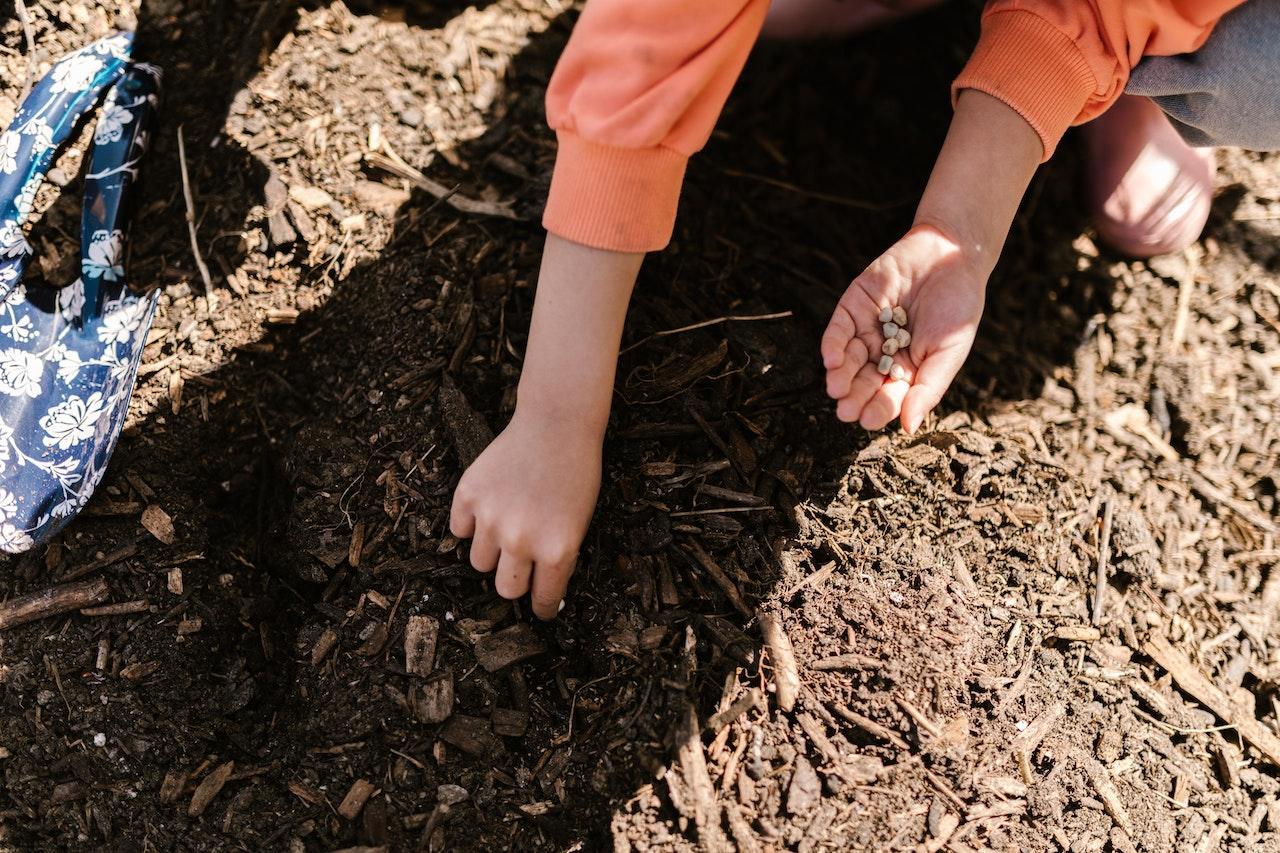Home Composting is the organic method that accelerates the decomposition process by creating an optimal environment where bacteria, fungi, and other decomposing species begin to work. Compost, produced in the process of composting, is affectionately known as black gold by farmers, is packed with nutrients, and can be utilized in farming, gardening, and agribusiness.
We can treat organic waste in various ways, including commercial composting operations, smaller-scale communal composting facilities, and biogas plants. This article focuses mostly on the steps of home composting, which is an excellent technique to keep organic material out of the waste stream while also producing a beneficial soil supplement that you can use.
What are green waste and brown waste used in home composting?
Green waste for composting

Green composting materials are generally damp or newly grown materials. These materials are mainly made up of plants. This, however, is rarely the case. The following are the green components:
- Grass cuttings
- Ground coffee or tea bags
- Scraps of vegetables and fruits
- Perennial and seasonal plant trimmings
- Seasonal weeds that have not yet produced seed
- Eggshells
- Animal waste
- Seaweed
Brown waste for composting

Compostable brown materials include drying or wood organic material. Most of these components are brown or will gradually turn brown. The following are examples of brown items:
- Pine branches
- Fall leaves
- Tree branches, twigs, and bark
- hay or straw
- sawdust
- Maize stalks
- Papers
- lint from the dryer
- cotton cloth
- cardboard (no waxy or slick coverings)
What is home composting?

Home composting is a cost-effective and efficient approach to reduce your overall garbage at home while lowering your carbon impact. Organic waste that is disposed of in a landfill produces methane, a significant greenhouse gas that adds to the adverse effects of climate change. Composting produces a beneficial soil supplement that can be used to improve your environment, increase plant life, and trap emissions.
Composting at home can indeed be undertaken in a covered container, a readily constructed burrow, or in a no-fuss heap. The idea is to mix your byproducts to achieve a carbon-nitrogen balance, to keep stuff wet but not soaked, and to provide ample oxygenation deep in the stack. The bacteria will take care of everything.
Materials for home compost

The appropriate materials
Many natural and sustainable substances can be composted, but the appropriate mix is critical. To thrive microbes require an equal mix of ‘brown’ and ‘green’ matter. Therefore strive for 50 percent of each. If the mixture is incorrect, composting could be a lengthy process and provide an unpleasant outcome.
Organic Matter that is ‘Green’
Fresh, moist, and sticky material that rots quickly and offers crucial nitrogen and moisture, such as perennial wildflowers, bindweeds, grassy mowings, bush trimmings, potted plants, trimmed florals, root vegetables, fruit shavings, vegetable shavings, tea leaves, and coffee grounds. Your daily kitchen waste is a good source of green matter for composting. This can be one of the ways to green up your kitchen.
Organic Matter ‘Brown’
Aged, drier, and crumbly stuff rots more slowly. It contains a lot of carbon, works as a fiber, and permits air spaces to develop, which is why it is found in things like fall leaves, Christmas trees, hay, cardboard, cotton napkins, egg cartons, peels, garbage bags, napkins, vacuum cleaner components, and wool.
Steps to do home composting
Composting can be done all year, but the best time is midsummer to mid-winter. There are different ways: warm composting if you need compost as early as possible and cold composting if you don’t.
Hot Composting

- Collect enough items to cover the compost container all at once. Before putting the waste in the bin, stir it a few times to ensure a proper ratio of green and brown materials that it is diced into tiny chunks.
- Load the stuff into the bin, spraying it along with water as you move to keep it damp. It needs to be as wet as a drained cushion.
- To get the composting process up and running quickly, add a big pile of ready-made manure or soil rich in microbes.
- After several days, your stack is going to be warm to the touch; under optimal circumstances, it can reach a temperature ranging from 50 to 65 degrees Celsius, and you may notice vapor emerging from the stack as you move it or poke into it.
- As quickly as the core cools down about a week later, carefully mix the materials of your heap, moving debris from the center toward the outside. It adds oxygen to the heap and causes it to warm up further. You can stir your heap with a gardening spade or shovel, or you can purchase a composting extractor, which will make it simpler to rotate especially if it’s in a professionally constructed bin.
- After that, flip your heap every 4-5 days or whenever the weather cools. If it’s getting too dry, add some water.
- It will be done when it changes into crumbling, black stuff that resembles thick damp dirt and emits an earthly, pleasant odor. This process requires significant effort, but you will be blessed with great compost in a couple of weeks to months.
Cool Composting

- Begin filling your bin, aiming for a thickness of at most 30 centimeters to begin with.
- Keep adding green and brown waste by regularly dumping your cooking trash and vegetable scraps into your compost pile.
- Every few days, tend to combine the items in your bin. This introduces air, which promotes microbes and accelerates breakdown, so the more frequently you flip it, the sooner the compost will be available to use. Rotating your heap enables you to check on the moisture content.
- When the manure is suitable to use, the bottom of your container will have a dark brown, nearly black soil-like coating.
- This approach requires significantly less energy than warm composting and is the most commonly used. Composting can take a whole year or more, depending on the materials you add as well as how frequently you stir it. Even if your compost pile never gets hot, the end outcome may be just as wonderful.
Need for Home composting

Could Save Money- Composting is an organic and sustainable procedure that can save costs. It does not necessitate the use of any pesticides, fertilizers, or chemicals. As a result, it is a low-cost pastime that could potentially save you a significant amount of money.
- Beneficial to Soil- It might be beneficial to the physical well-being of the topsoil. Furthermore, composting can enhance the soil’s fertility and protect against potential plant pathogens.
- Controls Lawn Pests- Getting control of garden insects can be a difficult task. Therefore, good composting can guarantee that insects are kept to a minimum because compost includes several minerals that function as insecticides.
- Enhance Soil Structure- Composting is believed to introduce beneficial microbes to the soil, such as fungi and bacteria. These bacteria accelerate microbial activity, which improves soil texture and is among the finest ways to preserve your garden.
- Beneficial Exercise- While composting has many advantages for the earth, it can also help you keep fit and healthy. It is an excellent form of exercise that keeps you engaged and provides wonderful both a mental and physical workout.
- Recycles Home Garbage- Composting can recycle about 30% of household waste. This includes food scraps and other kitchen garbage. Composting this waste creates useful manure for the earth and reduces overall contamination in your environment.
- Environmentally Friendly- The majority of our household waste is thrown away in landfills, where it rots and emits both carbon dioxide and methane into the atmosphere. Composting organic matter can assist in reducing the total environmental impact.
- Economical- According to experts, each Indian household wastes over 50kg of food annually. Composting can provide us with a clear picture of the amount of food wasted, allowing the organization to our shopping purchases.
Conclusion
Composting is the biological decay of organic matter such as kitchen waste, plant debris, and so on by microorganisms and fungi to produce compost. In other words, composting is indeed the act of converting organic particles that are normally discarded. The final product is compost, which serves as an organic source of critical nutrients for the ground.










